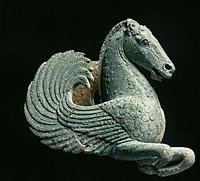
Pegasus
Greek, c. 5th century B.C.
Greek, c. 5th century B.C.
Standing Buddha (detail)
Gandhara, second half of the 2nd century A.D.
Gandhara, second half of the 2nd century A.D.
Of the many extant known examples of Gandharan standing buddhas, this
image measuring 250 cm tall is renowned as a large buddha, along with
the statue from the Peshawar Museum. The right hand, now missing,
appears to have been raised in the gesture that dispels fear from
Buddhist followers, called the abhaya-mudra. The left hand
hangs down to hold his robe in a posture derived from the
Greco-Roman style. The carving of the hair and garment as well as
the softening of a rigid countenance suggest that this work dates to
a period slightly after the reign of Kaniska I, which is said to be
the height of Gandharan art. Apart from art historical
consideration, this powerful sculpture captures the hearts of all
its viewers and was the first work acquired for the South Wing.
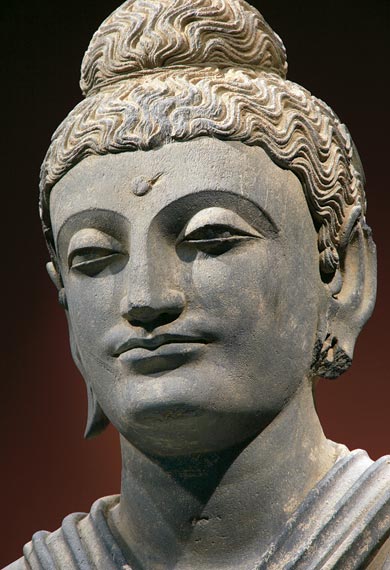
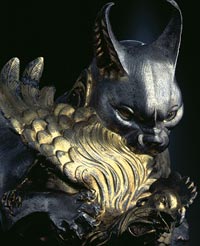
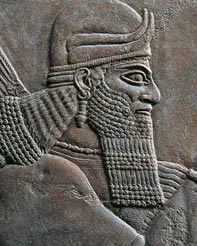
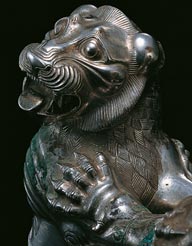
Rhyton with Caracal Cat and Fowl(detail)
Iran or Central Asia,
late 2nd to 1st century A.D.
Iran or Central Asia,
late 2nd to 1st century A.D.
Winged, Human-headed Genius and Royal Attendant (detail)
Northern Iraq, North-west palace in Nimrud, 9th century B.C.
Northern Iraq, North-west palace in Nimrud, 9th century B.C.
Compound Zoomorphic Vessel(detail)
Western or northwestern Iraq, 8th to 6th century B.C.
Western or northwestern Iraq, 8th to 6th century B.C.